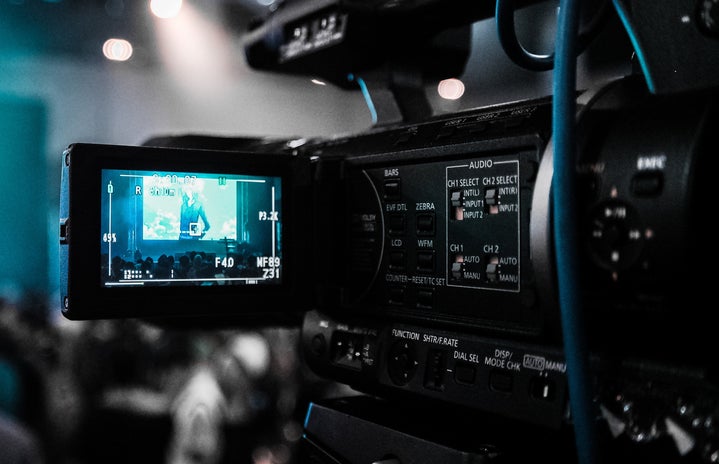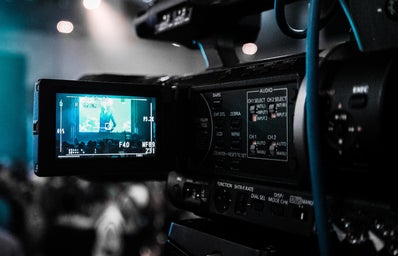Media, particularly movies and TV shows, can have a huge impact on how people view themselves and the world around them. Watching something in a movie or TV show could persuade you to act a certain way or believe in something you wouldn’t have before. This is why representation matters in media, particularly within movies and television. The CUA HerCampus Team recently gathered to discuss the representation of women in media.
Molly Mullin, the Vice President of our CUA Chapter, created a presentation and gave our team background information about this issue and how it affects our world today. She focused mainly on the ways in which women are represented in movies. Mullin mentioned five different stereotypes that women often fall into in movies.
- Damsel in Distress
This is a woman who, seemingly, can’t fix her problems herself and needs someone, typically a man, to save her. One example of this is the character Princess Buttercup from The Princess Bride
- Cold Hearted Career Woman
Hallmark Movies are notorious for using this stereotype with its characters. This woman is typically too focused on her career to have any fun or have any love in her life. Usually the story revolves around her sacrificing her career for love and realizing that love is important too. This stereotype perpetuates the idea that women can’t have both love and a career, which is not true. This stereotype is clearly found in the movie The Proposal with the character Margaret Tate.
- Manic Pixie Dream Girl
This character is typically a bubbly, shallow, free-spirited girl whose sole purpose in the movie is to help a quiet, introverted man come out of his shell. This character shows no character arch throughout the movie, while her male counterpart does. A great example of this stereotype is Summer from 500 Days of Summer.
- The ‘Cool’ Girl
This character usually just acts like “one of the guys” and her male friends never see her as feminine. She likes eating junk food, beer, burping, or all of the above. At some point in the movie, she usually undergoes a makeover and looks more ‘girly’ and all of a sudden, her male friends see her as attractive. Andi Anderson from How to Lose a Guy in 10 Days is a classic “cool girl.”
- Ms. Switcheroo
This character goes against her moral and against herself to gain male validation. She begins the movie one way, and by the end has completely changed herself for to start dating a boy. A classic example of this stereotype is Sandy from the movie Grease.
While these movie stereotypes can definitely be seen as negative, Mullin made clear that it’s still okay to enjoy these movies. Everyone loves a cheesy rom-com every once in a while, and even though some movies may use these stereotypes, it’s still okay to enjoy watching them. As Mullin stated, “no one is gonna take away your feminist card if you watch one of these movies.” It’s just important to be aware that these stereotypes happen in the media and to not fall into the trap of believing them. Women are much more than how they are portrayed in the media.
The group spent time reflecting on the ways women are portrayed in the media and times when we noticed these stereotypes. One of our chapter members, Caroline Chaney, mentioned how “Regina George in Mean Girls was a stereotypical ‘mean girl’ and the movie was focused on women fighting.” Another member of our chapter, Marta Bystrowska, brought up the movie Aliens, and how in this movie, while the lead character was a female and is portrayed to be overpowerful and strong, to accomplish this the writers took away all her feminine qualities. Emma Shannon, another chapter member, talked about the well-known Disney movie; High School Musical. Shannon pointed out that Gabriella’s entire character was built around her liking the character Troy and being Troy’s girlfriend. All of these examples show that many well-known and popular films can have negative, and even harmful, stereotypes within them.
While we discussed the negative ways women have been portrayed in movies, we also discussed some of the women characters that were shown in a positive way in movies, and that can even act as role models for other women.
Several members of our chapter talked about the female characters in Little Women. Our chapter’s Events Director, Julia Pandolfi, talked about how all four of the main characters are great examples of strong and powerful women, despite them all having vastly different personalities and desires. Multiple other chapter members talked about how the March Sisters from Little Women have served as role models for them throughout their life and childhood. Member, Cassie Gaeta, talked about the character Rachel from the TV show Glee. Gaeta talked about how Rachel never lost sight of her goals to be on Broadway. Annie Magrino brought up the movie Booksmart and how she really enjoyed this movie, particularly how it showed a stereotypical ‘nerdy’ girl who didn’t change herself to be liked more by other people. Many of our chapter members were able to think of several different characters that they saw breaking the normal stereotypes that women fall into in movies.
Some TV shows and movies like the ones our chapter members mentioned show how women can be independent, feminine, and powerful all in their own unique ways. Having female characters represented in media like this can be crucial for developing confidence and a strong identity as a woman for people of all ages.
Mullin finished her presentation by stating that while there has been some improvement in the film industry, we are nowhere near perfect. Obviously, this isn’t a problem that can be fixed overnight, however being more aware of the issue and recognizing when it becomes a problem can be beneficial. Conversations, like the one CUA HerCampus had, can bring this issue to light and spread awareness to the negative impacts of the way women are portrayed in media.

